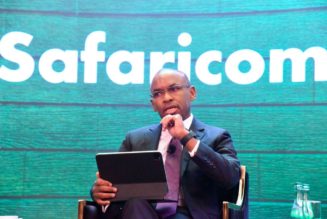Data Hub
How Africa can cut impact of US dollar on its markets
Friday March 03 2023
The discussion we don’t have often enough, though, is the oversized impact the movements of the US Dollar can cause upon emerging market countries. FILE PHOTO | SHUTTERSTOCK
Whenever I meet clients and investors, the one discussion I always end up having, regardless of market conditions, is on currency markets.
There are often strong views expressed about why domestic policy direction or the price of key tradable goods or services is leading to one’s home currency strengthening or weakening.
The discussion we don’t have often enough, though, is the oversized impact the movements of the US Dollar can cause upon emerging market countries and whether there is any way to reduce this over time.
While policy and trade are usually the main drivers of major currencies, I often point out that currencies, and their drivers, are relative, not absolute.
Therefore, any discussion of policy or external balances of an economy matters, but primarily in relation to the policy or external balances of the economy’s major trade partners.
Read: Why is the Kenya shilling losing against US Dollar?
However, when it’s the US Dollar itself that’s on the move, the impact is magnified due to the significant proportion of global fuel and food that is priced in US Dollars.
This was highlighted in 2022, with the US Dollar appreciating significantly against most global currencies.
The US Federal Reserve hiked interest rates at a record pace, tackling US inflation that was spiking due to global fuel and food price rises post the Russian invasion of Ukraine.
This “double-whammy” of higher US interest rates and racing global inflation caused a massive headache for central banks everywhere.
For most, the unpalatable choices were to either hike interest rates even faster than the US to prop up their currency, or to let the currency depreciate making the already higher-priced food and fuel, even more, expensive to import.
Many countries instituted fuel or food subsidies to help reduce the impact on their citizens, however, this typically increased budget deficits, driving debt levels higher at a point when funding that debt had suddenly become much more expensive.
As if the situation wasn’t difficult enough, most African countries still rely on US dollar-denominated debt to help finance their economies.
United Nations trade body UNCTAD estimates that Africa’s external debt stock rapidly grew to $466 billion by mid-2022 through bilateral borrowing, syndicated loans, and bonds.
As local currencies devalue, dollar debt repayments become more expensive, pushing more countries towards a future potential debt crisis.
Across Africa, this deluge of geopolitical and macroeconomic shocks has weighed heavily on many currencies. For net importers of fuel and food, it has led to both the steepest currency depreciations as well as the highest inflation levels.
This macro back-drop, combined with governmental policy and central bank missteps, has pushed some currencies to historic lows.
Countries that fared better typically have one of two things in common. They are either net fuel exporters, or they applied quasi or actual capital controls to limit the depreciation of their currency.
But whilst restricting capital outflows might provide the illusion of control to a hard-pressed Central Bank, it has two majorly negative implications for the real economy.
One, the ability for importers to access US Dollars becomes very difficult. This leads to either a parallel FX market forming, access to essential imported goods becoming problematical, or both.
Hardly anyone had heard about Sri Lanka’s financial woes until they ran out of dollars to buy fuel…
Two, existing investors who want to extract dividends etc. or potential future investors, are deterred from investing in that country due to fear of being unable to repatriate capital.
This impacts the long-term growth potential of an economy, with insufficient investment capital available to be put to work.
Some may argue that the stronger dollar should be viewed as an opportunity for Africa as it results in inward investments into the continent being cheaper for US investors, and in dollar-based African exports being comparatively more competitive.
However, the rush to emerging markets will not materialise if foreign investors remain nervous about continued local currency depreciation, and its impact on local currency returns once converted back into dollars.
Read: Shilling hits new record low against the dollar
Luckily for most of Africa, the US Dollar peaked last October and has since dropped in value by over 10 per cent against most major currencies.
This happened even though the US Federal Reserve has continued to hike rates. This has given some much-needed relief to those countries hardest hit, but leads me to ask the question – is it possible to reduce the impact of future gyrations of the US Dollar on their economies?
Kenya has an ambitious programme to introduce a repo market in 2023, backed by a local Central Securities Depository.
This should improve liquidity in the underlying bonds, cheapening the level it can issue local currency debt. This initiative should be applauded, and I would like to see other African countries following suit.
So, in summary, Africa is over-exposed to the US Dollar. Its constituent countries need to either independently work to mitigate that risk or work collectively to do so.
Bouts of dollar strength are cyclical, so there is hopefully time to action initiatives before the next one arrives. Hope is not a strategy.
But I do hope that the elected officials in Africa, have recognised the damage wrought over the last 12 months and are working on their strategy.
Mark Price is the regional head of financial markets – AME, Standard Chartered Bank.









